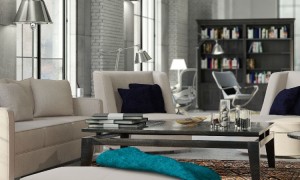Painting Tips for Your Soon-to-Be Rad NYC Studio
If you’re looking for painting tips for a studio apartment, you’ve come to the right place. When you live in a studio, you’re basically living in one room. Since there’s no other room to escape to, you want to get it right the first time. Here’s how.
If you’re on the hunt for painting tips for your almost-fabulous NYC studio apartment, you need to be sure that you make a choice that you absolutely love since there’s no escaping that room once it’s done. And yes, “Oh, you can always repaint it if you hate it,” but will you? Probably not, especially not right after you’ve put away all the paint cans and tarps and moved your furniture back into place.
Studio apartments, those all-in-one-room living spaces so familiar to many New Yorkers, present their own set of challenges when it comes to painting. You probably want to make sure that you choose a color that is welcoming and makes you feel happy, but you don’t want to feel boxed in when it comes to your choices. Well, you don’t have to be. Think about the effect you’re going for before you throw on your painter’s overalls (or hire a painter off Craigslist), and you’ll be more likely to love the final results. Here are some painting tips to get you started.
Decide What Mood You’re Going For
Figure out what vibe you’re going for in your studio. Do you want a bright, clean minimalist, almost art-gallery vibe in the space? White will be right. Are you aiming for more of a cocoon-like space? Moody neutrals like grey will save the day.
Don’t Be Afraid of Color
Color doesn’t necessarily make your space look smaller. In fact, it can make a space look even bigger, if it’s the right shade. Jewel-toned colors like emerald or sapphire can make a space look large and feel delicious. Flat paint in a room with scant light can make a space seem gloomy instead of cozy, so take note of how much natural light you get before choosing the type of paint you use. Paints with at least a bit of sheen can help the room retain light, a useful trait in rooms with small or few windows.
Don’t Be Afraid of White, Either!
Your picky friends and nosier relatives may think that white paint is a cop out. If you love it, go for it. White creates a clean, crisp feeling, and it also makes the corners and walls of your room recede, making your space appear bigger. There are literally hundreds of different shades of white paint, each with different undertones. Some whites have a smoky, almost sooty vibe, while others slice sharply through a room darting sparks of blue. Each white comes with its own subtle nuances that can instantly change the look and feel of a room, so do your research.
Introduce Subtle Changes in Shade
Use gradations of a color instead of one solid shade all around. This will help ensure that it doesn’t feel like you’re sitting inside of a solid colored box. For instance, use a slightly deeper blue in the kitchen that opens up to a lighter blue in the main living area. If you’re unsure if the shades you pick work together, choose colors that are next to each other on your paint brand’s paint strip.
Test Before Buying
In addition to testing out the colors on your wall (use paint sample boards; they’re bigger and give a truer picture of what the color will look like in your studio), test them out in different lighting conditions. That Farrow & Ball Pavilion Gray that looks so rich in the glow of the sunset flooding your windows could end up looking like a totally different color at night when set against your own lighting. Make sure you’re happy with it in all lighting conditions.
Image Source: Flickr/Ewen Roberts
[cf]skyword_tracking_tag[/cf]




